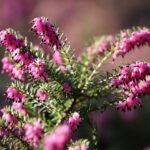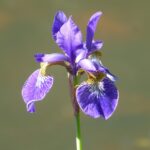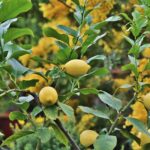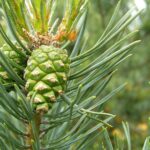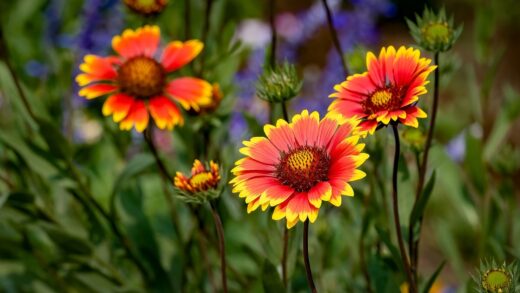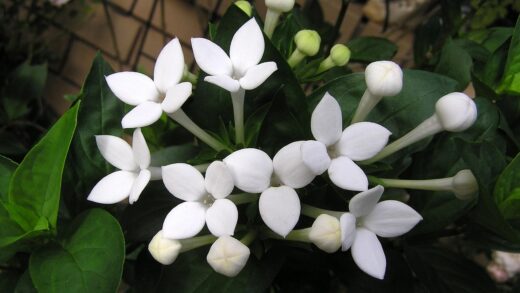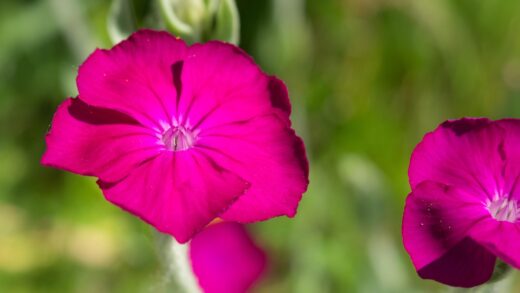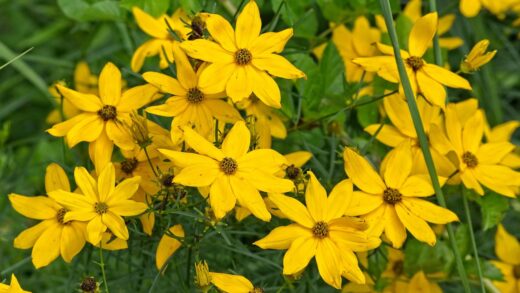Pruning and cutting back the German iris are essential maintenance practices that contribute significantly to the plant’s health, appearance, and long-term productivity. These tasks are not complex, but their timing and execution are crucial for achieving the desired results. The primary goals of pruning are to redirect the plant’s energy away from seed production and towards rhizome development, to improve garden aesthetics by removing spent blooms, and to enhance sanitation by eliminating old foliage that can harbor pests and diseases. A well-timed pruning regimen is a key component of a comprehensive care strategy that ensures a vigorous and beautiful iris display year after year.
The first pruning task of the season occurs immediately after the flowers begin to fade. This process, known as deadheading, involves the removal of the spent blossoms and, ultimately, the entire flower stalk. Allowing the plant to develop seed pods is a significant drain on its energy reserves—energy that would be better spent on developing the new rhizomes that will produce the following year’s flowers. By promptly removing the faded blooms and their stalks, the gardener encourages the plant to focus exclusively on this vital vegetative growth, leading to stronger plants and more prolific blooming in the future.
Throughout the growing season, the foliage of the German iris should be largely left intact, as it is the plant’s engine for photosynthesis. However, it is good practice to periodically groom the plants by removing any individual leaves that have turned yellow or brown or are showing signs of disease, such as fungal leaf spot. This selective trimming not only keeps the plant looking tidy but also improves air circulation within the clump and removes potential sources of infection before they can spread. These trimmings should be disposed of and not left on the ground around the plant.
The most significant cutting back occurs in the autumn, after the first hard frosts have killed the foliage. At this time, the entire fan of leaves should be cut down to a height of about 10-15 centimeters. This major autumn cleanup is arguably the most important non-chemical step in controlling the iris’s most formidable pest, the iris borer. The adult moth lays its eggs on the old leaves in late summer, and by cutting back and destroying this foliage, the gardener effectively removes the vast majority of the next generation of borers from the garden, preventing a serious infestation the following spring.
The purpose of pruning in iris maintenance
The overarching purpose of pruning in iris maintenance is to strategically guide the plant’s energy and to maintain a high level of garden hygiene. Unlike pruning in shrubs, which is done to shape the plant or encourage branching, pruning in irises is about resource management and sanitation. By removing parts of the plant that are no longer productive or that pose a health risk, the gardener helps to create a stronger, more resilient plant that can focus its resources on the essential tasks of storing energy and preparing for future blooms.
More articles on this topic
One of the primary goals is the conservation of energy. The production of seeds is a biologically intensive process that requires a great deal of the plant’s stored energy reserves. Since German irises are hybrids and do not grow true from seed, allowing them to form seed pods offers no benefit to the home gardener. Deadheading the spent flowers and stalks prevents this energy expenditure, redirecting those resources back into the rhizome. This results in larger, healthier rhizomes that are better equipped to survive the winter and produce a robust floral display the following year.
Another key purpose is disease and pest control. The foliage of the German iris, especially as it ages and begins to decline, can become a breeding ground for problems. Fungal spores that cause leaf spot and rust can multiply on dying leaves, and the iris borer moth specifically targets this foliage to lay its eggs. The annual autumn cut-back is a critical sanitation measure that breaks the life cycles of these organisms. By removing and destroying the old foliage, the primary overwintering sites for both the borer eggs and fungal pathogens are eliminated.
Finally, pruning serves an important aesthetic function. A garden bed filled with irises that still have brown, shriveled flowers clinging to their stalks looks untidy and neglected. Promptly removing these spent blooms keeps the planting looking fresh and allows the striking, sword-like foliage to become the main feature after the blooming season has passed. Similarly, trimming away damaged or yellowing leaves during the summer and performing the final cut-back in the autumn contributes to a well-maintained and orderly garden appearance throughout the year.
Deadheading spent blooms correctly
Deadheading German irises is a two-stage process that should begin as soon as the individual flowers on a stalk start to fade. An iris stalk, or scape, typically bears multiple flower buds that open in succession over a period of several days. Once a single flower has finished its display and has begun to wilt and shrivel, it should be removed. This can be done by simply pinching or snapping off the individual faded flower, along with its small stem and the swollen green ovary at its base, from the main stalk. This immediate removal prevents the plant from starting the process of seed formation and keeps the remaining flowers on the stalk looking their best.
More articles on this topic
This process of removing individual spent flowers should be continued as each one fades. Once the final flower on a stalk has finished blooming, the second stage of the process can be completed. The entire flower stalk should be cut back as close to the rhizome as possible without damaging it. A sharp, clean knife or a pair of secateurs should be used to make a clean cut. Leaving a long, headless stalk is unsightly and provides no benefit to the plant. These tough, fibrous stalks do not decompose quickly and can provide a potential site for pests or diseases to enter.
The benefits of this diligent deadheading are significant. The most immediate effect is aesthetic; the iris clump looks much tidier and more attractive without the messy, decaying flowers. More importantly from a horticultural perspective, it ensures that all of the plant’s energy following the bloom period is channeled directly into the growth of new leaves and, most crucially, the development and expansion of the rhizomes. This focus on vegetative growth and energy storage is what fuels the subsequent year’s flower production.
It is important to be careful during this process not to damage the remaining buds or the foliage. When cutting back the main stalk, make sure not to accidentally cut into the surrounding leaf fans. All the pruned material, including the individual faded flowers and the larger stalks, should be collected and removed from the garden. Composting this material is generally acceptable, as the flower stalks are less likely to harbor the specific pests and diseases that are problematic on the foliage.
Managing the foliage after flowering
In the period immediately following the end of the bloom season, the foliage of the German iris takes on a critical role and should be carefully preserved. The leaves are the plant’s primary means of producing energy through photosynthesis. After the significant energy expenditure of flowering, the plant needs to replenish its reserves, and it does this by using its leaves to capture sunlight. This energy is then transported down to the rhizomes, where it is stored to fuel survival through dormancy and to power the growth of the following spring.
Therefore, the common temptation to cut back the foliage immediately after flowering to “tidy up” the plant is a detrimental mistake. Removing the green, healthy leaves at this stage would be akin to removing the solar panels from a solar-powered device just when it needs to recharge its batteries. This will severely weaken the plant, result in smaller and less vigorous rhizomes, and will almost certainly lead to a significant reduction in the number of flowers the following year. The foliage must be allowed to continue growing and photosynthesizing for as long as it remains green and healthy.
While the bulk of the foliage should be left intact, this post-bloom period is a good time for light grooming. The plants should be inspected regularly, and any individual leaves that have started to turn yellow or brown, or that show significant signs of damage or disease like fungal leaf spot, should be removed. This can be done by cutting the specific leaf off at its base where it emerges from the rhizome. This selective removal improves the appearance of the clump, increases air circulation, and helps to prevent the spread of any potential pathogens.
This period of foliage management continues throughout the summer. The plants will continue to produce energy as long as the weather is conducive to growth. As the heat of mid-summer intensifies, the irises may enter a semi-dormant state, and some of the outer leaves may naturally begin to yellow and die back. This is a normal part of the plant’s cycle, and these specific leaves can be removed as they decline. The main, healthy core of foliage should be preserved until the major autumn cut-back.
The annual autumn cut-back
The annual autumn cut-back is the most significant pruning event in the life of a German iris and is a crucial task for maintaining a healthy planting. This major trimming should be performed late in the season, after the first one or two hard frosts have occurred. The frost will naturally kill the foliage, causing it to turn yellow or brown and begin to collapse. This is the signal that the plant has finished photosynthesizing for the year and has entered its winter dormancy, making it the perfect time to remove the leaves.
Using a sharp, clean pair of pruning shears, scissors, or secateurs, the leaf fans should be cut back to a height of approximately 10 to 15 centimeters. Some gardeners prefer to cut the leaves straight across, while others find that trimming them into an inverted ‘V’ shape, mimicking the natural fan shape, is more aesthetically pleasing. The exact shape of the cut is less important than the act of removing the bulk of the foliage itself. This removes the primary overwintering site for iris borer eggs and fungal spores.
After cutting back the foliage, it is absolutely essential to practice good sanitation. All of the cut leaves and any other plant debris in and around the iris clump must be thoroughly collected and removed from the garden. This debris should ideally be bagged and put in the trash, not added to the compost pile. This is because home compost piles rarely reach the sustained high temperatures necessary to reliably kill iris borer eggs and hardy fungal spores. Leaving the cut foliage on the ground completely defeats the purpose of the autumn cut-back.
This final cut-back serves multiple purposes. Its primary function is sanitation, breaking the life cycles of pests and diseases. It also improves the appearance of the garden, leaving a neat and tidy bed for the winter. Furthermore, removing the heavy, dead foliage prevents it from collapsing onto the rhizomes, where it could trap moisture and contribute to winter rot. This single, well-timed task is one of the most effective actions a gardener can take to ensure the health and vitality of their irises for the following season.
Tools and techniques for clean cuts
Using the right tools is essential for making clean, precise cuts when pruning German irises, which helps to minimize damage to the plant tissue. For deadheading individual flowers and cutting back the large flower stalks, a sharp pair of bypass secateurs or floral snips is ideal. Bypass pruners, which have a sharp blade that sweeps past a lower jaw like a pair of scissors, make a cleaner cut than anvil pruners, which can crush the plant stems. For the major autumn cleanup of the foliage, a sturdy pair of garden scissors or hedge shears can make the job quicker and easier, especially on large clumps.
Before beginning any pruning task, it is a critical best practice to ensure that your tools are clean and sharp. Dull blades can tear and crush plant tissues rather than slicing through them cleanly. These ragged wounds take longer to heal and can provide an easy entry point for diseases. Similarly, tools that have been used on other plants can carry microscopic pathogens. It is highly recommended to sterilize your pruning tools before use, and especially between moving from one iris clump to another if you have had any disease issues. This can be done easily by wiping the blades with a cloth soaked in rubbing alcohol or a 10% bleach solution.
When making the cuts, the technique should be decisive and precise. For cutting back flower stalks and foliage in the autumn, aim to make the cut at a slight angle. This can help to shed water, although this is less of a concern with irises than with woody plants. The most important thing is to cut at the correct height—as close to the base as possible for flower stalks, and at the recommended 10-15 centimeter height for the autumn foliage cleanup. Avoid tearing or pulling at the leaves or stalks, as this can damage the rhizome to which they are attached.
After the pruning is complete, proper tool care will ensure they are ready for the next task. Clean off any plant sap or soil from the blades, and consider giving them a final wipe with an oily rag to prevent rust. Storing your tools in a dry place will prolong their life and ensure they remain in good condition. This attention to detail, both in the technique of cutting and in the care of the tools used, reflects a professional approach to gardening and contributes to the overall health and well-being of the plants.









